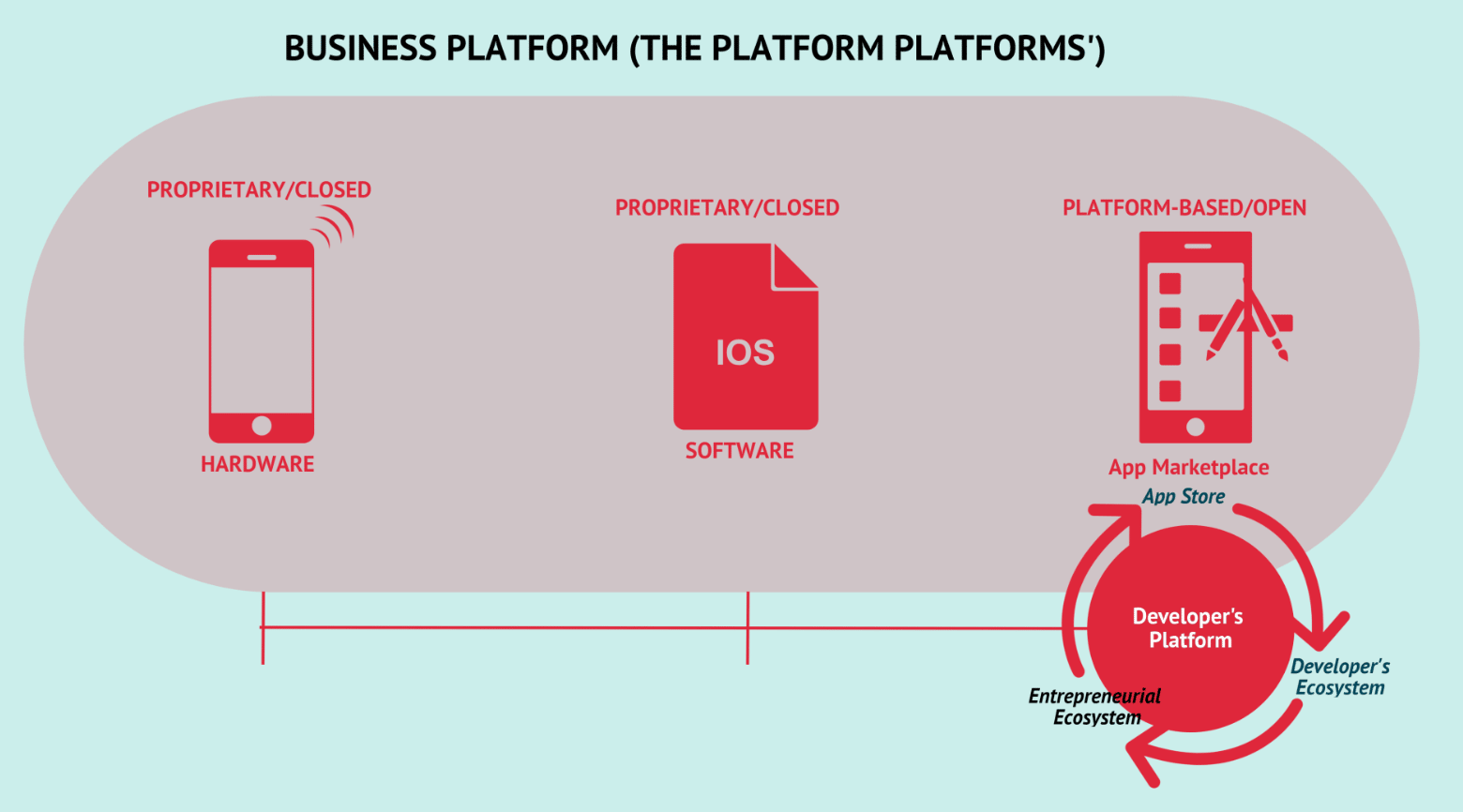How Outdated Business Apps Hamper Your AI Strategy

Table of Contents
Data Silos and Incompatibility
The foundation of any successful AI strategy is high-quality, readily accessible data. However, outdated business applications often create significant data silos, making it extremely difficult to leverage the full potential of your information assets.
Data Integration Challenges
Legacy systems frequently store data in disparate formats, posing a major challenge for AI implementation. This incompatibility makes aggregating and analyzing data for AI model training a complex and time-consuming process.
- Examples of incompatible formats: Proprietary databases, outdated file types like .dbf or .txt, spreadsheets scattered across different departments.
- Difficulties in data cleaning and preprocessing: Inconsistent data formats lead to significant challenges in data cleaning and preprocessing, requiring extensive manual intervention to ensure data quality.
- Impact on AI model accuracy and performance: Poor data quality, stemming from incompatible formats and inadequate cleaning, directly impacts the accuracy and reliability of AI models, undermining the value of your AI investment.
Lack of API Access and Interoperability
Many legacy systems lack the Application Programming Interfaces (APIs) necessary for seamless integration with modern AI platforms and tools. This absence of API access creates significant hurdles in data exchange and workflow automation.
- Challenges in automating data transfer and workflows: Manual data entry remains the norm, increasing the risk of human error and significantly slowing down the process.
- Increased reliance on manual data entry: This labor-intensive approach is costly, inefficient, and prone to errors, significantly reducing productivity.
- Difficulty in real-time data analysis and decision-making: The lack of automated data flows prevents real-time insights, hindering timely and data-driven decision-making.
Security Risks and Compliance Issues
Outdated business apps often present significant security risks, directly impacting the security and trustworthiness of your AI projects. Moreover, they frequently struggle to meet modern data privacy and compliance requirements.
Vulnerability to Cyberattacks
Legacy systems frequently lack the robust security features found in modern applications, creating vulnerabilities that can expose sensitive data crucial for AI model training.
- Examples of security flaws: Lack of encryption, outdated authentication methods (like weak passwords), insufficient access controls, and absence of regular security updates.
- Risks of data breaches and the impact on AI projects: A data breach can compromise the integrity of your AI models, lead to regulatory fines, and severely damage your reputation.
- Compliance issues related to data privacy regulations: Non-compliance with regulations like GDPR, CCPA, or HIPAA can result in substantial penalties and legal repercussions.
Difficulty in Maintaining Compliance
Meeting regulatory requirements with outdated applications is extremely challenging, creating significant roadblocks for AI initiatives that rely on compliant data handling.
- Examples of relevant regulations: GDPR (General Data Protection Regulation), CCPA (California Consumer Privacy Act), HIPAA (Health Insurance Portability and Accountability Act).
- The cost of remediation and the delay in AI deployment: Bringing legacy systems into compliance can be expensive and time-consuming, delaying your AI deployment and increasing overall project costs.
- Reputational damage due to non-compliance: Failure to comply with data protection regulations can severely damage your company's reputation and erode customer trust.
Limited Scalability and Flexibility
Outdated business applications often lack the scalability and flexibility necessary to support the demands of AI-driven processes. This limitation hinders efficient workflow automation and efficient adaptation to evolving business needs.
Inefficient Workflow Automation
Legacy systems often prevent the automation of workflows crucial for efficient AI-driven processes, leading to increased manual effort and operational costs.
- Examples of manual tasks that could be automated: Data entry, report generation, data validation, and other repetitive tasks.
- Increased operational costs and reduced productivity: Manual processes are significantly more expensive and less efficient than automated ones, impacting your bottom line.
- Difficulty in adapting to changing business needs: Legacy systems often struggle to adapt to new requirements, hindering innovation and preventing quick responses to market changes.
Lack of Support and Maintenance
Finding support and maintenance for legacy systems can be increasingly difficult, impacting the reliability and stability of your AI systems.
- Increased downtime and technical issues: Older systems are more prone to malfunctions and require more frequent maintenance, increasing downtime.
- Higher maintenance costs compared to modern solutions: Maintaining outdated systems is often more expensive than using modern, cloud-based applications.
- Difficulty in integrating new AI features and functionalities: Integrating new AI features into legacy systems can be extremely challenging or even impossible.
The Solution: Modernizing Your Business Applications
The key to unlocking the full potential of your AI strategy lies in modernizing your business applications. This involves upgrading to modern, cloud-based, and API-driven applications.
Benefits of Application Modernization
Modernizing your applications offers numerous advantages for your AI initiatives:
- Improved data integration and accessibility: Modern applications facilitate seamless data integration, making it easier to aggregate and analyze data for AI model training.
- Enhanced security and compliance: Modern systems incorporate robust security features and are designed to comply with relevant data privacy regulations.
- Increased scalability and flexibility: Modern applications can easily scale to handle growing data volumes and adapt to changing business needs.
- Reduced operational costs and improved efficiency: Automation and streamlined workflows reduce operational costs and improve overall efficiency.
Strategies for App Modernization
Several strategies can be employed for application modernization, including:
- Rehosting: Moving your applications to a new infrastructure (e.g., cloud).
- Refactoring: Improving the internal structure of your applications without changing their external functionality.
- Replatforming: Migrating your applications to a new platform while retaining their core functionality.
- Replacing: Replacing outdated applications with modern alternatives.
Conclusion
Outdated business apps pose significant hurdles to successful AI strategy implementation. They impact data integration, security, scalability, and compliance, ultimately hindering your ability to leverage the full potential of AI. Don't let outdated business apps hamper your AI strategy. Assess your current applications and plan for modernization today. By transitioning to modern, cloud-based solutions and API-driven architectures, you can unlock the true value of AI in your business and gain a significant competitive advantage.

Featured Posts
-
 7 Carnival Cruise Line Updates Coming Next Month
May 01, 2025
7 Carnival Cruise Line Updates Coming Next Month
May 01, 2025 -
 Luto En El Futbol Argentino Fallece Joven Promesa De Afa
May 01, 2025
Luto En El Futbol Argentino Fallece Joven Promesa De Afa
May 01, 2025 -
 Chris Kaba Panorama Police Watchdog Challenges Bbcs Coverage
May 01, 2025
Chris Kaba Panorama Police Watchdog Challenges Bbcs Coverage
May 01, 2025 -
 Eurovision Festival Manchester Dates Events And Venues
May 01, 2025
Eurovision Festival Manchester Dates Events And Venues
May 01, 2025 -
 Is Norwegian Cruise Line Nclh Stock A Smart Hedge Fund Investment
May 01, 2025
Is Norwegian Cruise Line Nclh Stock A Smart Hedge Fund Investment
May 01, 2025
